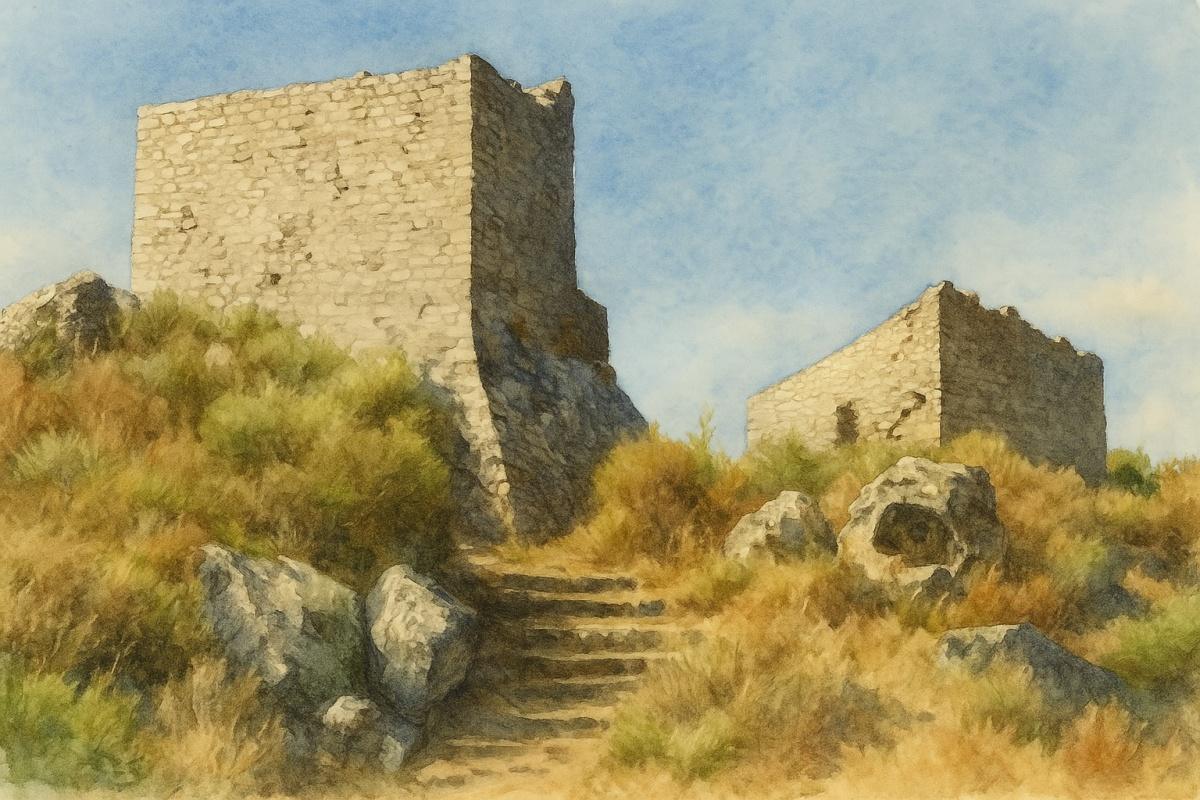The Castello di Santo Niceto, also known as the Castle of Sant'Aniceto, is a Byzantine fortress located in the municipality of Motta San Giovanni, in the Metropolitan City of Reggio Calabria. Built between the late 10th and early 11th century, the castle stands on a hill at about 670 meters above sea level, overlooking the Strait of Messina.
Historical Background
Constructed during the period of the Eastern Roman Empire, the castle served as a Byzantine kastron, a fortification intended to protect the population and goods—especially silk produced in the Reggio area—from Saracen raids. Even after the Norman conquest in 1060, the castle retained its defensive role. In the 13th century, it became the command center of the fiefdom of Santo Niceto, which included Motta San Giovanni and Montebello. In 1459, during the conflicts between the Angevins and the Aragonese, the castle was conquered and destroyed by the people of Reggio using a trick: a herd of goats with candles tied to their horns was mistaken for an enemy army, causing the defenders to leave the castle unguarded.
Architecture
The castle has an irregular layout that resembles the shape of a ship, with the bow facing the Aspromonte and the stern facing the sea. The walls, between 3 and 3.5 meters high and about one meter thick, are built of squared stone, bricks, and strong mortar. At the entrance, two square towers are still visible. At the base of the hill leading to the castle, there is a small church with a dome frescoed with an image of Christ Pantocrator, a typical subject in Byzantine art. Inside the walls, there are remains of cisterns, stone millstones, and burials—evidence of life within the fortress.
Origin of the Name
The name of the castle comes from Saint Nicetas, a Byzantine admiral who lived between the 7th and 8th centuries and was particularly venerated in Sicily. Sicilian refugees, who fled the island due to Arab invasions, settled in Calabria and, with the support of the Byzantine government, helped build the kastron, dedicating it to their patron saint.
Restoration and Enhancement
In recent years, the Castello di Santo Niceto has undergone restoration and conservation efforts aimed at preserving the structure and enhancing its historical and cultural value. Today, it is a destination of interest for history lovers, architecture enthusiasts, and those seeking breathtaking landscapes.



